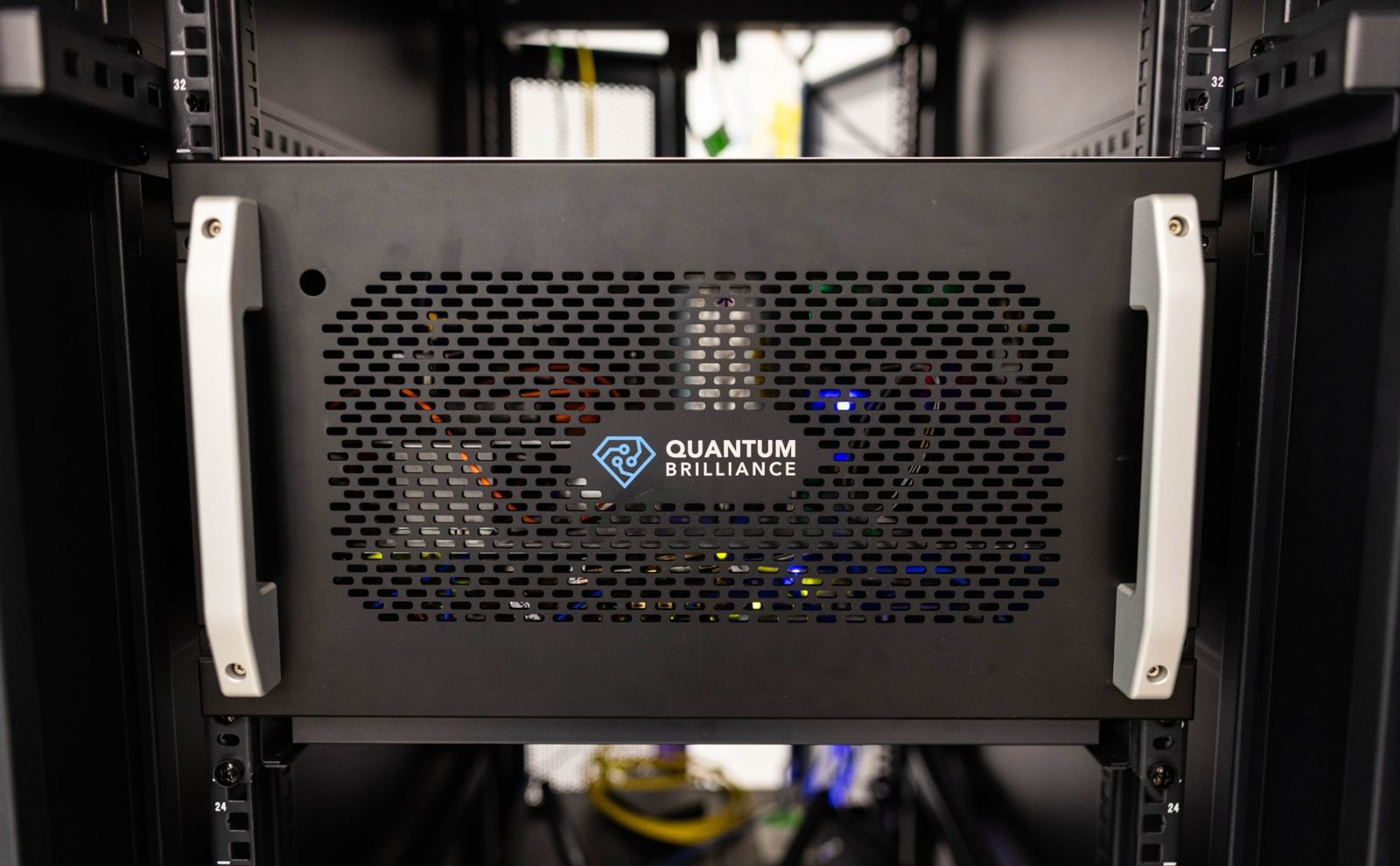Quantum Brilliance – QDK in rack. Image from Quantum Brilliance, with permission.
The U.S. Department of Energy’s Oak Ridge National Laboratory (ORNL) announced its first installed and operational quantum computer in its data centre in Tennessee. The system is a diamond-based quantum accelerator cluster from Australia-based Quantum Brilliance.
Unlike most other quantum computers, the QB system works at room temperature in a rack-mounted compact form without requiring cryogenic temperatures or complex laser and vacuum systems to keep the qubits stable.
ORNL will use the system to explore how parallelized quantum processing units (QPUs) can enhance high-performance computing, much like GPUs have done for classical workloads.
Laboratory staff will use ORNL’s first on-site, commercial quantum computer cluster to explore ways to integrate this emerging technology into classical high-performance computing infrastructures and tap its potential for massive computational power gains.
According to Ashley Barker of ORNL: “By hosting a Quantum Brilliance system on site, we’ll be maturing the real mechanics of hybrid computing — co‑scheduling, end‑to‑end performance tuning, data and workflow orchestration, workforce development and more — so we can eventually move HPC-quantum integration from a conceptual pilot to a fully embedded capability within leadership computing.”
He adds: “Leveraging the potential power of quantum computing in a hybrid ecosystem is important to the nation and aligns with ORNL’s mission of boosting innovation, energy, competitiveness and national security.”
Quantum computing — a technology still in its formative stages compared to classical supercomputers— utilizes quantum bits, or qubits, to perform calculations. Unlike binary bits used by classical computers, qubits don’t use 1s and 0s to encode information. Rather, they use a quantum superposition to exponentially increase processing power for certain kinds of problems, including quantum mechanics.
Last year, the OLCF published a paper in Future Generation Computing Systems proposing a framework to integrate quantum and classical computing, reflecting its commitment to hybrid computing research.
The partner – Quantum Brilliance – is based in Australia and Germany and specializes in the design, fabrication and manufacturing of small, ruggedized quantum devices. The company’s quantum system is a hybrid full-stack platform that integrates a quantum processing unit, or QPU, alongside graphics processing unit, or GPU, and CPU components, allowing it to support parallel and hybrid quantum-classical workflows.
ORNL’s first on-site, commercial quantum computer cluster will be used by OLCF staff to explore ways to integrate this emerging technology into classical high-performance computing ecosystems.
Installed in the OLCF’s Advanced Computing Ecosystem testbed — a data centre sandbox for experimenting with new computer technologies — the cluster of three Quantum Development Kits, or QDKs, features three parallelized QPUs for a total of six qubits. Although most current quantum computer systems are prone to high error rates, with physically large architectures that require extreme cooling to retain quantum coherence, the diamond-based QPUs used by Quantum Brilliance operate at room temperature in a relatively small package.
To learn more about the technology, check out the companion article Q&A: Inside Quantum Brilliance’s Quantum Computer Technology
